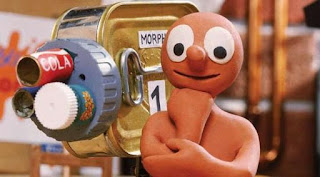Stop Motion
Stop motion is an animation technique in which models (usually clay) are manoeuvred and photographed in small steps, which gives the appearance of self-movement when played back. Any object, living or otherwise, can be used in creating stop motion animation. The first known usage of stop motion was back in 1897 in the film The Humpty Dumpty Circus, by Albert E. Smith and J. Stuart Blackton. It featured a toy circus where various animals and acrobats came to life. In the early days of stop motion, it was usually shown as if things were moving by magic. One of the earliest creators of stop motion media was Wladyslaw Starewicz, a Polish-Russian animator, who used dead insects with wire limbs in order to achieve certain scenes.
Stop motion has a unique look and is oftentimes favoured over more complex animation mediums, such as CGI, due to it's low cost. It is very popular in children's films and television shows, as it displays a whimsical and fun quality. Real life textures such as fingerprints or marks can often be seen in stop motion models. Malleable substances such as clay and plasticine heavily showcase these unique patterns. These textures can also be created in CGI, but they don't look quite as realistic as are they are artificially-made. The basic tools required to make a stop motion animation are models/dolls, lighting, backdrops, props, a tripod and recording equipment.
Stop motion is usually one of the first building blocks when studying animation skills. Modern stop motion animation software tends to be easy to use for beginners, and is often implemented in educational courses. Although the initial set up for a scene is relatively simple, more advanced and complex films can also be created. Stop motion has featured in not only film and television shows, but music videos, adverts and computer games. Below are some examples of well-known stop motion animation:
Some of the most popular software for creating and editing stop motion animation is Stop Motion Pro, Zu3d, AnimatorHD or qStopMotion. There are both free and paid-for applications, which can suit both beginners or professionals. There are also various forms of stop motion, such as cutout animation, stereoscopic stop animation and go motion. Flat objects can be used instead of 3D ones and computers can be programmed to move the models in increments, rather than by hand.
Creating the animation itself by hand can be time-consuming, as limbs or parts have to be moved in millimetres. Depending on the complexity of a scene or movement, it could weeks just to put together one minute's worth of animation. Animations can also be enhanced with music or dialogue performed by actors.



Comments
Post a Comment